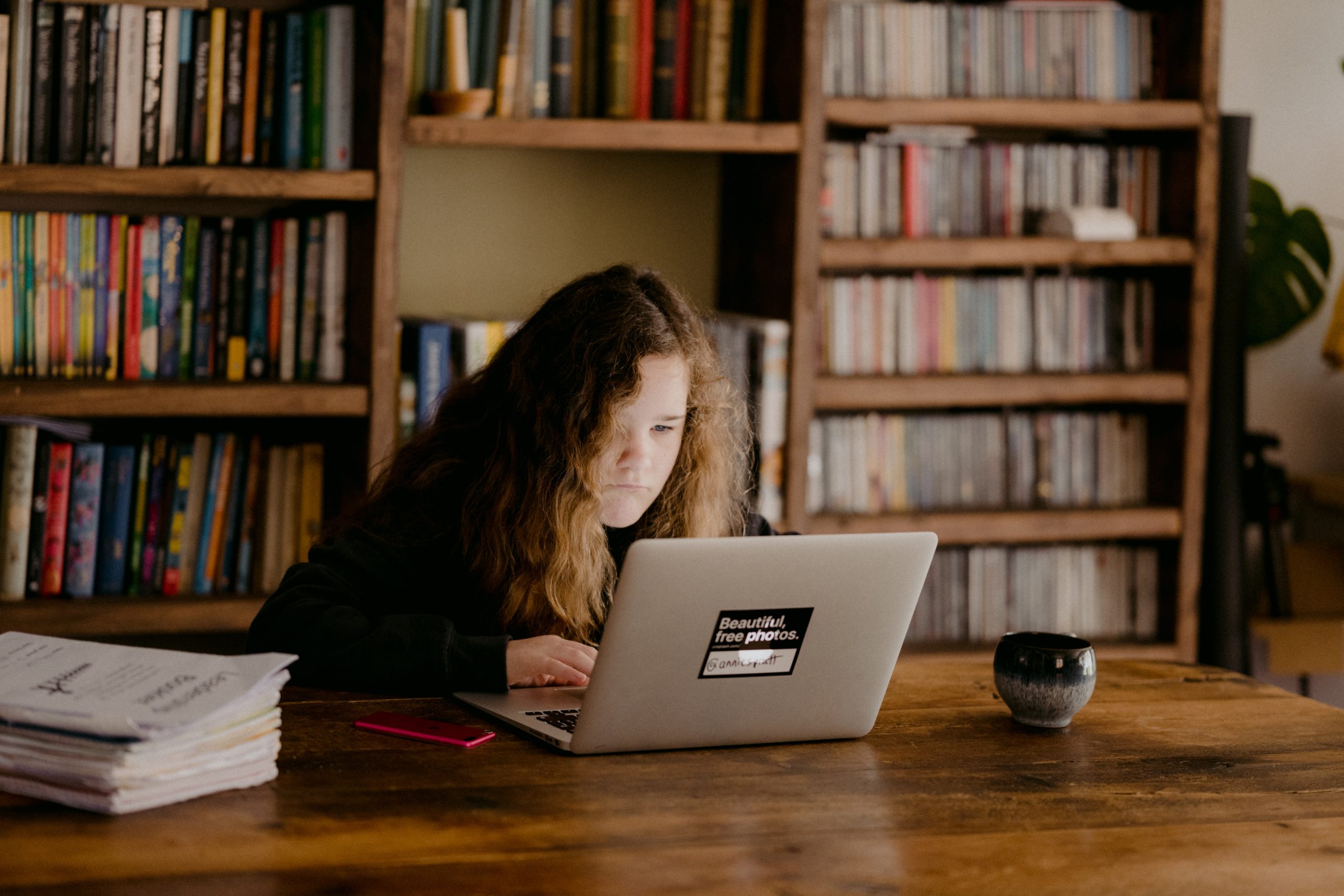Your Bad Posture Has Permanent Effects—Here’s How to Correct It
As many of you may relate, hunching over a computer for 12 hours straight has been my everyday routine for the past 10 months. I didn’t do much about my bad posture except complain about all the neck and back pain.
Eventually, my discomfort grew, and I turned to fitness as a last resort. Since I started out incredibly weak, I excitingly witnessed improvements fairly quickly. However, the sudden presence of muscles also drew my attention to an asymmetry in my shoulders. My right shoulder slanted downwards while my left remained parallel to my head. Immediately, I feared I had caused an exercise-related injury.
Fortunately, I was well-versed in my Studentcare health policy. As a full-time University of Toronto undergraduate student, I knew my insurance covered $30 per chiropractor/physiotherapist appointment, for up to 20 visits a year (https://studentcare.ca/rte/en/IHaveAPlan_UTSU_Health_HealthCoverage_HealthPractitioners). This meant that I would pay a maximum of $15 for each appointment at a Studentcare Network clinic. Since physiotherapists don’t require referrals, I went online and booked the earliest appointment at Bay and College Physiotherapy and Rehab (they are wonderful; I highly recommend them).
To my surprise, my physiotherapist said excessive slouching is what caused my curved shoulder. Moreover, my bad posture resulted in “nerd neck” development and pushed my collarbones inward. Beyond day-to-day aching and stiffness, my poor sitting position had a lasting impact on my muscles and bones. Not to mention, my crooked décolletage was certainly not an attractive look.
I was prescribed three exercises to fix my posture and realign my shoulders. Now, I am going to teach you! After doing these exercises for a month, I already see results. If you are looking to correct your hunchback and get those K-pop 90-degree shoulders, I am confident this upper body workout is for you. Take a break from sitting and join me in this quick 10-minute physiotherapy session!
[Exercise 1: Photo 1 and Photo 2]
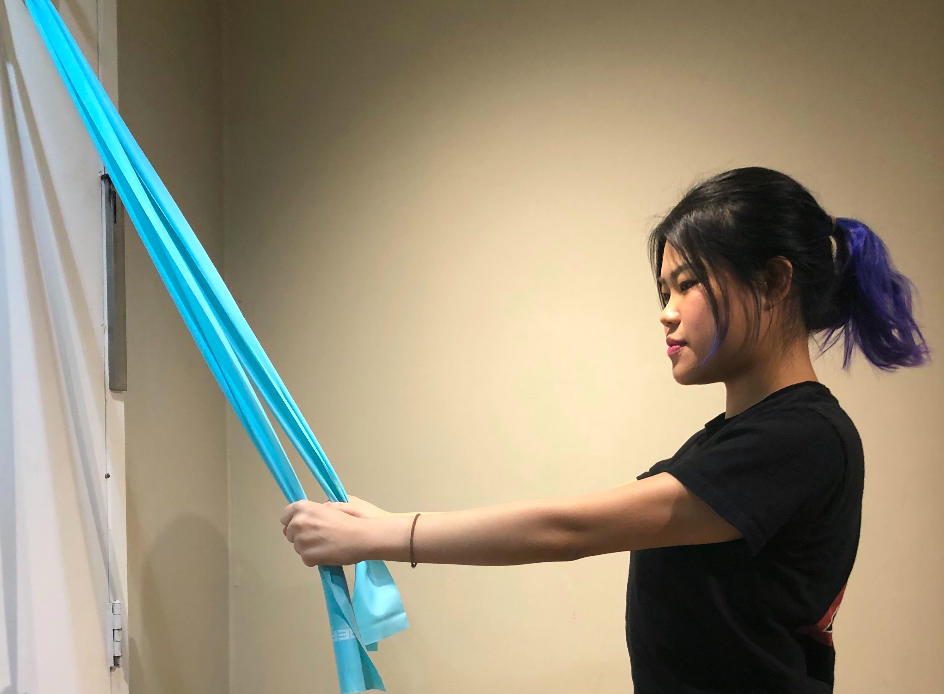

Stand shoulders’ width apart, and slightly bend your knees. Keeping your shoulders flat and your elbows straight, pull the resistance band down until your arms pass your torso. Do the exercise slowly to isolate muscle movement in your triceps and shoulders.
[Exercise 2: Photo 3 and Photo 4]

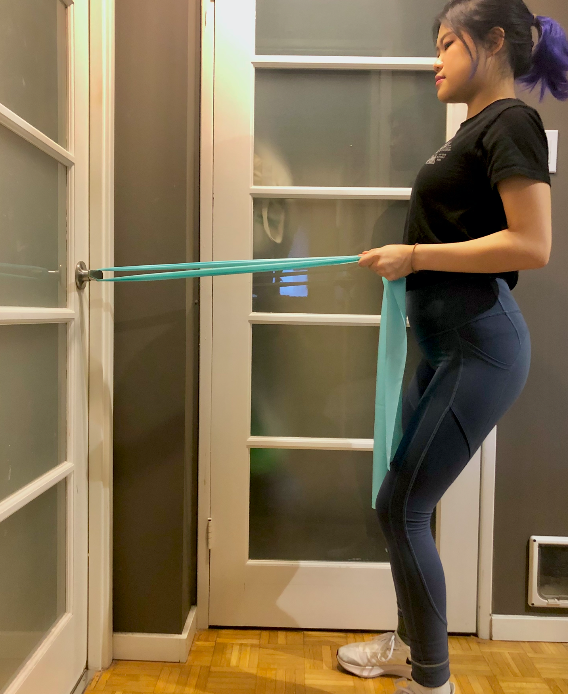
Stand shoulders’ width apart, and slightly bend your knees. Starting with your arms straight, pull the resistance band toward your stomach while keeping your arms tucked in. Try to focus on moving just your biceps, pectorals, and shoulder blades.
[Exercise 3: Photo 5 and Photo 6]
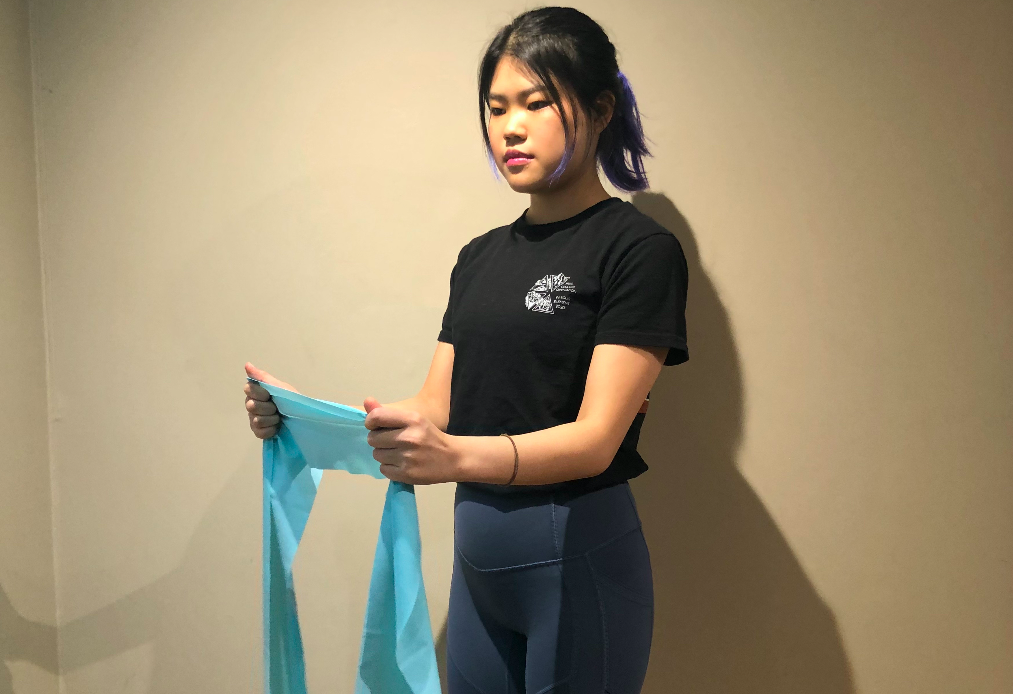
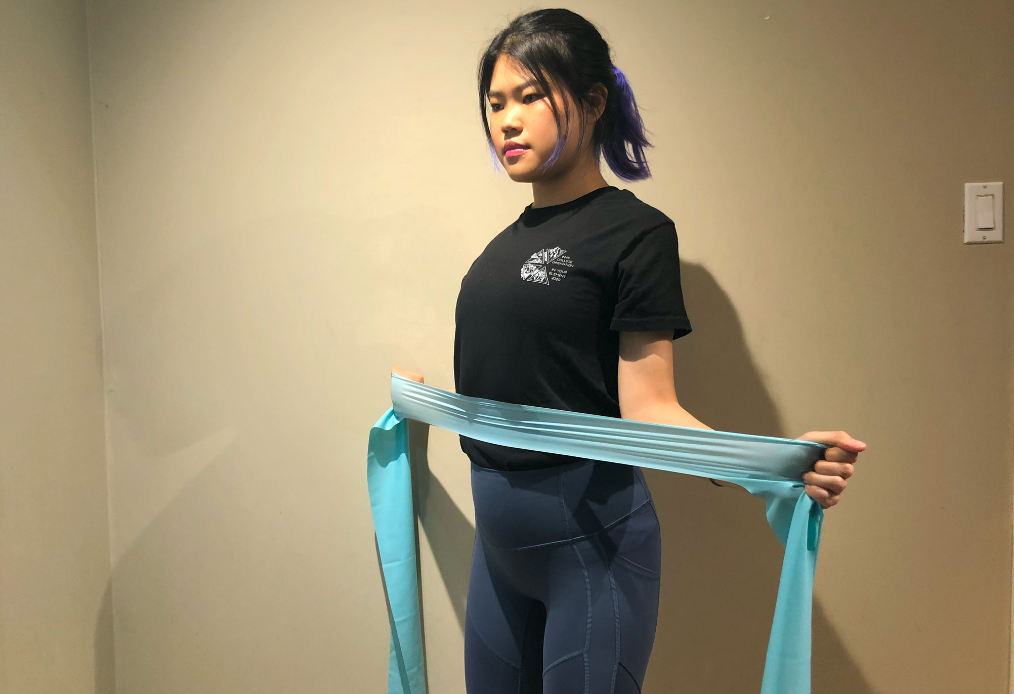
Stand shoulders’ width apart, and hold a resistance band horizontally across your body. With your arms straight in front of you, pull the band apart while bending your elbows. All your energy should come from your shoulder blades, pectorals, and deltoids.
